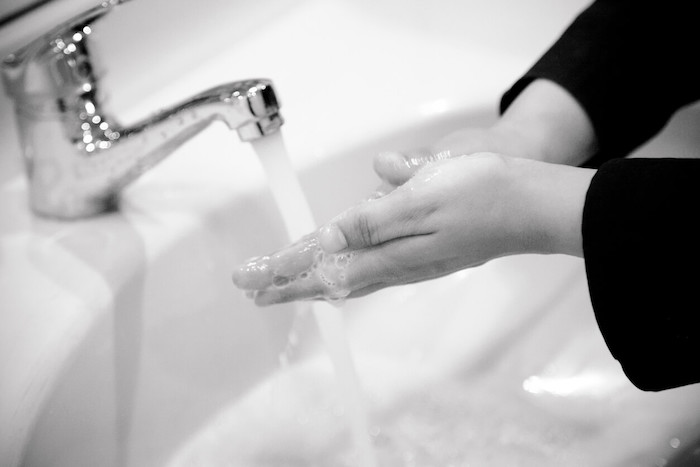The work of a Chevra Kadisha is done without promotion or fanfare, and is solely for the benefit of the deceased

The first time I touched a dead body was in a sanitized room inside a Dallas funeral home. I was stationed next to Ana’s toenails, with a small toothpick and a Q-tip. While firmly holding onto her foot, I silently cleaned away any dead skin, dirt or debris that might be found under her nails or between her toes.
Though Ana’s primary residence was several hours from the city, and she was not affiliated with any local synagogues, a burial plot in Dallas had her name on it. In Dallas, Ana’s family requested a Jewish burial service, including a plain, pine coffin and a ritual cleansing. The funeral home alerted the local Chevra Kadisha, the organization that prepares bodies in accordance with Jewish law, to perform the tahara or purification rituals, and, along with four other women, I volunteered.
Jewish death and Jewish life seem vastly different to me since joining the Chevra. Jewish life gets more and more public every day. Last year, an online Jewish organization paid for prime advertisement space in Times Square to fight antisemitism. Netflix offers Jewish experiences on demand, including the nuanced, scripted “Shtisel,” and the unabashed, reality-TV show “My Unorthodox Life.” Meanwhile, on Instagram, TikTok and Twitter, one can find countless accounts dedicated to informing the public about Jewish life and interfaith experiences.
Yet, while Jewish life seems to be increasingly visible, Jewish death rituals remain private, intimate and authentic. Narcissism and self-promotion are left at the entrance to the funeral home. Inside the tahara room, individual opinions, personal comfort and even your schedule are entirely secondary to the needs of the deceased. The experience is calming and comforting specifically because it is not about you. It’s a lesson for all of us who consider ourselves to be representatives of and in service to Jewish life.
If we can take a few moments to disconnect from the noise and selfishness of everyday living and instead focus on accountability — particularly in our interactions with those who may never repay us — we can maintain a certain purity of action in living an authentic Jewish life.
Prior to walking into the tahara room, I helped to prepare the casket. The first thing we realized, upon opening the box, was that there were not enough wood shavings to properly prepare her casket. Ana’s head was to be propped up on a pillow filled with wood shavings, and her body to lie on a sheet covering an arched bed filled with more wood shavings. We laid out the burial shrouds across the aron (casket) and waited for a funeral home manager to find more of this important material, but no additional wood could be found.
We asked her to keep some on hand for the future, set up what we had and hurried into the tahara room, unwilling to make the body wait for even another second.
After cleaning Ana’s nails and checking her body for any open wounds, I picked up a pot full of water. Starting with Ana’s hair, I poured the water from the pot onto her body as another member of the Chevra Kadisha washed her with a simple white linen cloth. We made our way down the right side of her body as another pair of women did the same on the left. Her body was cold to the touch.
Towels covered her body, and we lifted those towels only to reach a specific spot. Once the area was cleaned of any residual dirt or blood, we covered it again. Any bleeding that we had found during the process would be collected and buried in the casket with her.
I watched as her head remained elevated the entire time. Ana could be seen yet she herself could not see, and as such, we kept her face and eyes covered, out of respect.
Before washing Ana, I washed my own hands. In line with the ritual practice, I poured water from a cup onto my right hand, making sure the water spread from my wrist to the ends of my fingers. Then, I did the same for the left hand. I repeated this three times, in silence. After Ana’s body was cleaned, we washed again, replaced our gloves and filled three more buckets with water.
Ideally, Ana’s body would be entirely submerged in a mikvah. However, since that is not feasible in our community, we are required to pour water in a manner that will ensure that the flow does not stop, simulating a complete immersion. Ana’s body was completely uncovered as three women poured the buckets of water over her, beginning with her head and ending with her feet, making sure that the flow from the bucket was continuous. After the three women poured, we all proclaimed Ana’s purity, and one woman read the prayers. We then immediately covered and dried Ana’s body and began to dress her in burial shrouds.
Local traditions vary across places as different leaders (the “Rosha”) will follow specific customs they’ve been taught and have found to work. The practices followed by our Chevra include specific outlined rituals, local traditions and tikkunim, or “perfections.” A tikkun is a practice that assists in the performance of the ritual and serves as a reminder to the members of the Chevra that they must treat the body — which once held the soul and is now in transition — with the utmost respect.
One tikkun our Chevra keeps is placing a sign with the deceased’s Hebrew name in the tahara room, so that there is no time lost waiting to recall the name as we say the prayers. While dressing Ana, we turned the garments slightly inside out so that Ana’s body would not have to be moved more than necessary as we pulled them up her body — another tikkun we performed.
Complete Article ↪HERE↩!
